The Suffolk Town That Is ‘Britain’s Atlantis’
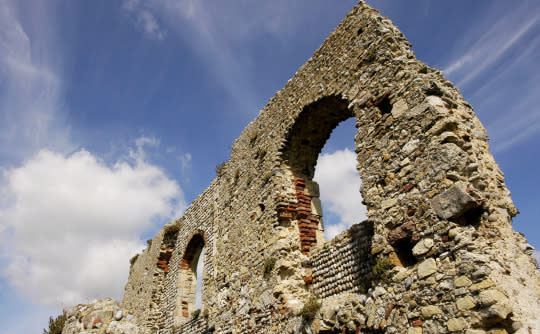
The tiny village of Dunwich has a population of less than 200 people and sits on the coastal edge of Suffolk - but it is a place steeped in mystery.
Once an international port, the now-quaint Dunwich was once the same size as London - but now most of the area resides beneath the ocean, earning it the title of ‘Britain’s Atlantis’.
However, unlike the lost city of Atlantis - which is merely a legendary underwater city that no one has yet been able to prove exists - the history of Dunwich’s decline and location is steeped in nothing but fact.
Dunwich was the capital of Kingdom of the East Angles and had a population in the thousands, with the area being a vital hub for ships that sailed to Britain.
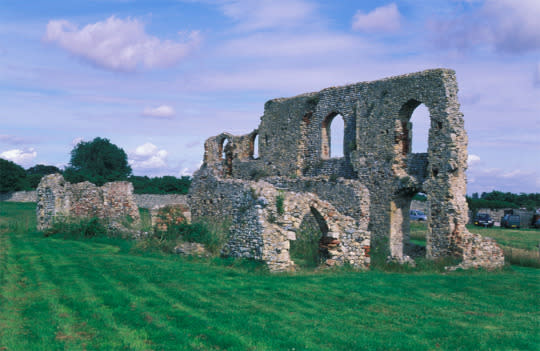
Ruins: Very little of the once large town of Dunwich exists today (Rex)
By the 11th century, the town was a powerhouse that was home to a crusader port, a naval base and various grand public buildings.
It was the tenth largest place in England and several large churches, monasteries and hospitals were built there for citizens who made a fortune from shipbuilding and international trade.
As well as being as large as the nation’s capital, Dunwich also had one sixth of the population of London and two seats in Parliament.
However, everything changed on 1 January 1286.

Changing scenery: The All Saints church has completely eroded over the years (Dunwich.org)
Storms in the past resulted in some damage to the harbour and even the loss of land - but a huge storm surge on New Year’s Day that year proved to be the beginning of the end of the prosperous town.
Buildings were destroyed, homes were lost and much of the area was simply swept into the sea, ruining livelihoods and damaging trade as well as bricks and mortar.
And it didn’t end there.
The following year, Dunwich, still reeling from the devastation of the previous storm, was battered with the South England flood in February and the St Lucia’s flood in December that silted up the river and harbour.
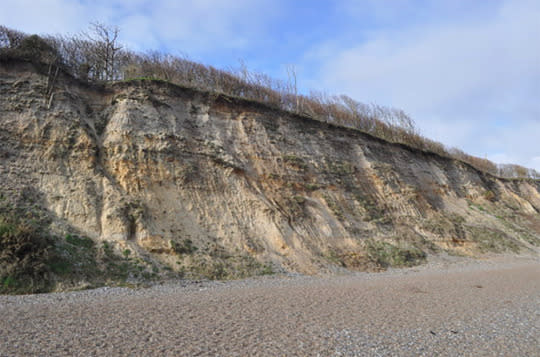
Power of nature: Coastal erosion has eaten away at the land (Geograph)
With the economy of the area lying in ruins, more storms over the next 80 years not only destroyed Dunwich - but drowned it beneath the waves.
The nearby village of Newton was simply swept away by a violent storm in 1328 while the remainder of the port was finally destroyed in its entirety during the Saint Marcellus’ flood - a massive Atlantic gale that swept across Europe, killing at least 25,000 people.
Over the years, most of the 13th century buildings that once stood proud have been lost and, as the area was gradually abandoned, a lack of sea defences and coastal erosion ate away at the land and All Saints church - the final remnant of a forgotten area - which itself fell into the sea in 1919.
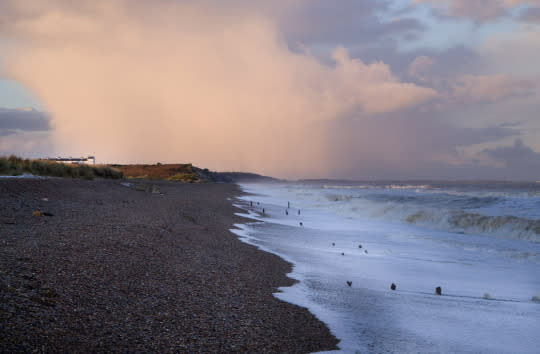
Destruction: The once busy port is now desolate coastline (Rex)
A town of thousands fell to just 237 residents by the 19th century - and that figure fell to just 187 in the 2011 census.
Where once grand buildings stood, today all that stands is a pub, a beach cafe and museum dedicated to the town’s fascinating history.
Over the years, the tales of a town that was buried under the ocean became something of an urban myth - but that all changed in 2013 when a team of British researchers used advanced 3D scanning to show buildings and a street that sat 32 feet below the murky waters of the North Sea.
Project leader Professor David Sear, from the University of Southampton, said at the time that the technology enabled them to “shine a light on the seabed”, which was pitch black previously.
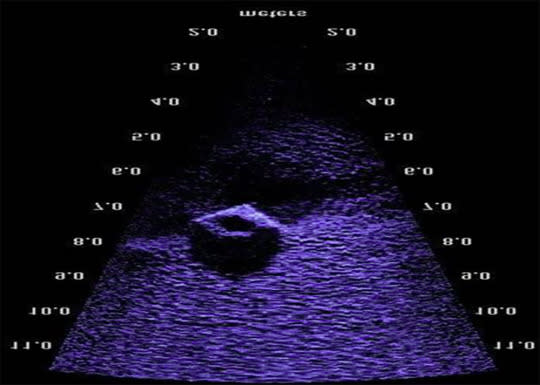
Revealed: The Chapel of St Katherine was visible in the underwater scans (University of Southampton)
Describing what his team found, Prof Sear said: “They were big structures, churches, a priory, but they fell over a cliff.
"They didn’t fall very far so they are in the places where we would expect to find them.”
Peter Murphy, coastal survey expert with English Heritage, added: "Everyone was surprised by how much of the eroded town still survives under the sea and is identifiable.
"While we cannot stop the forces of nature, we can ensure that what is significant is recorded and our knowledge and memory of a place doesn’t get lost forever.”

Quaint: Dunwich today is a far cry from how it used to look (Wikipedia)
Prof Sear warned that the history of Dunwich should not be taken lightly - and serves as a warning that it may yet happen again.
He explained: “Global climate change has made coastal erosion a topical issue in the 21st century but Dunwich demonstrates that it has happened before.
“The severe storms of the 13th and 14th centuries coincided with a period of climate change, turning the warmer medieval climatic optimum into what we call the Little Ice Age.”
While the fabled Atlantis is nothing more than a legend and a site that is almost romantic in its mythical heritage, might Britain’s real-life Atlantis serve as a stark reminder of the awesome force of nature - and not to take it for granted?

 Yahoo News
Yahoo News 
